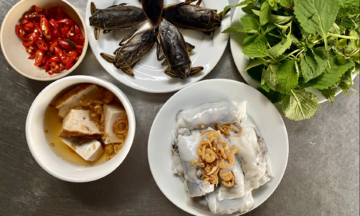Sa Dec boasts two national historical sites and 10 provincial historical sites, including revolutionary relics, architectural works of art, communal houses, pagodas, ancient houses, and monuments.
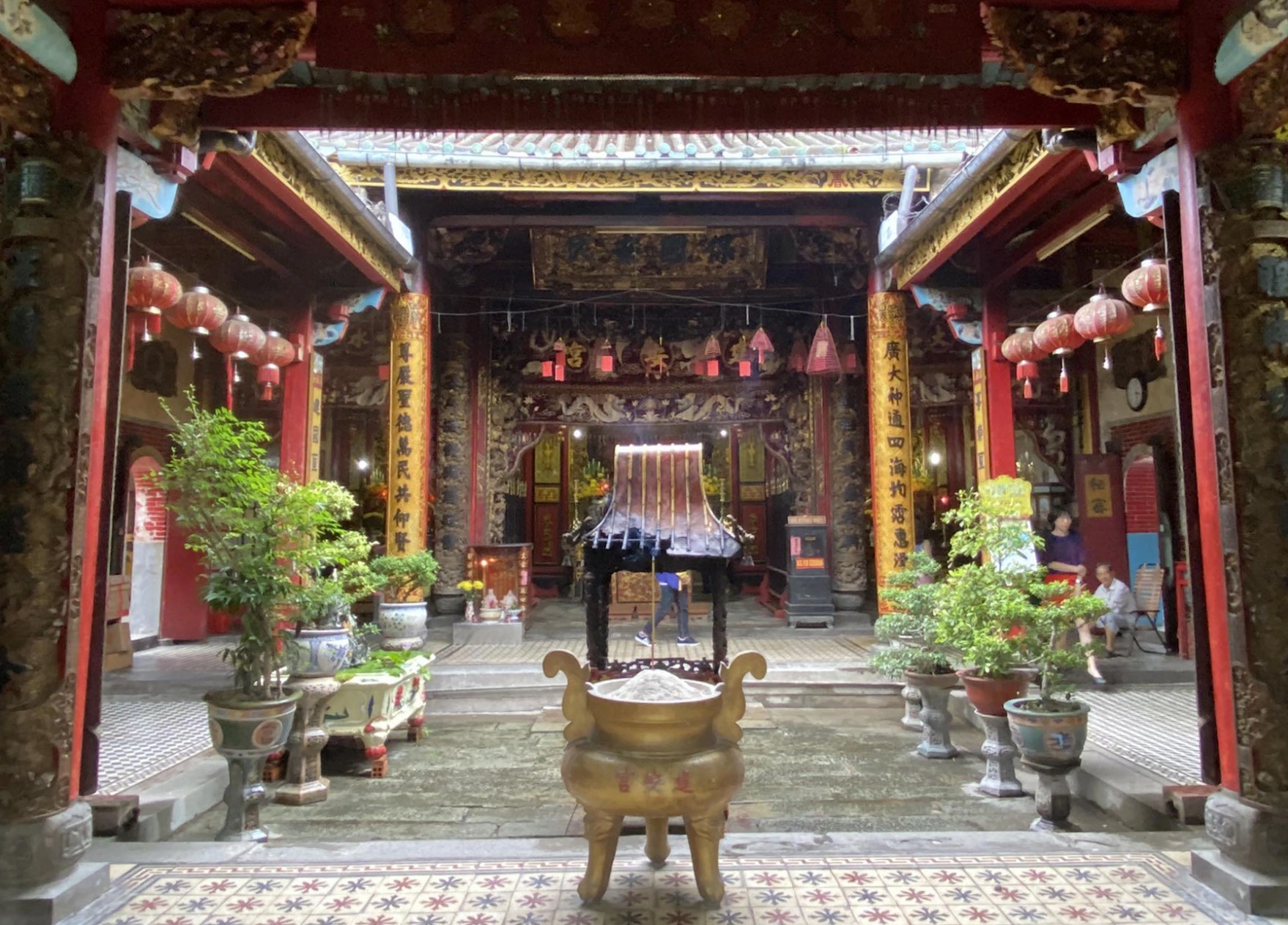 |
Sa Dec flower village from above. Photo: Ngoc Tai |
Sa Dec flower village from above. Photo: Ngoc Tai
Among these, Kien An Cung Pagoda, also known as Ong Quach Pagoda, stands out. Built in 1924 and completed three years later by the Fujian Chinese community, it's a national historical site.
Kien An Cung's architecture displays a strong East Asian influence with its yin and yang tiled roof, intricate carvings in precious wood, and numerous vibrant glazed ceramic reliefs. The main hall is decorated with horizontal lacquered boards, parallel sentences, and gilded statues, demonstrating a blend of Vietnamese and Chinese folk art.
For almost a century, Kien An Cung Pagoda has stood as a testament to the integration and contributions of the Chinese community in Sa Dec, becoming an essential cultural heritage site of Dong Thap province. Today, it continues to attract numerous visitors, contributing to the preservation of cultural identity and local tourism development.
 |
The main hall of Kien An Cung Pagoda. Photo: Dong Phong
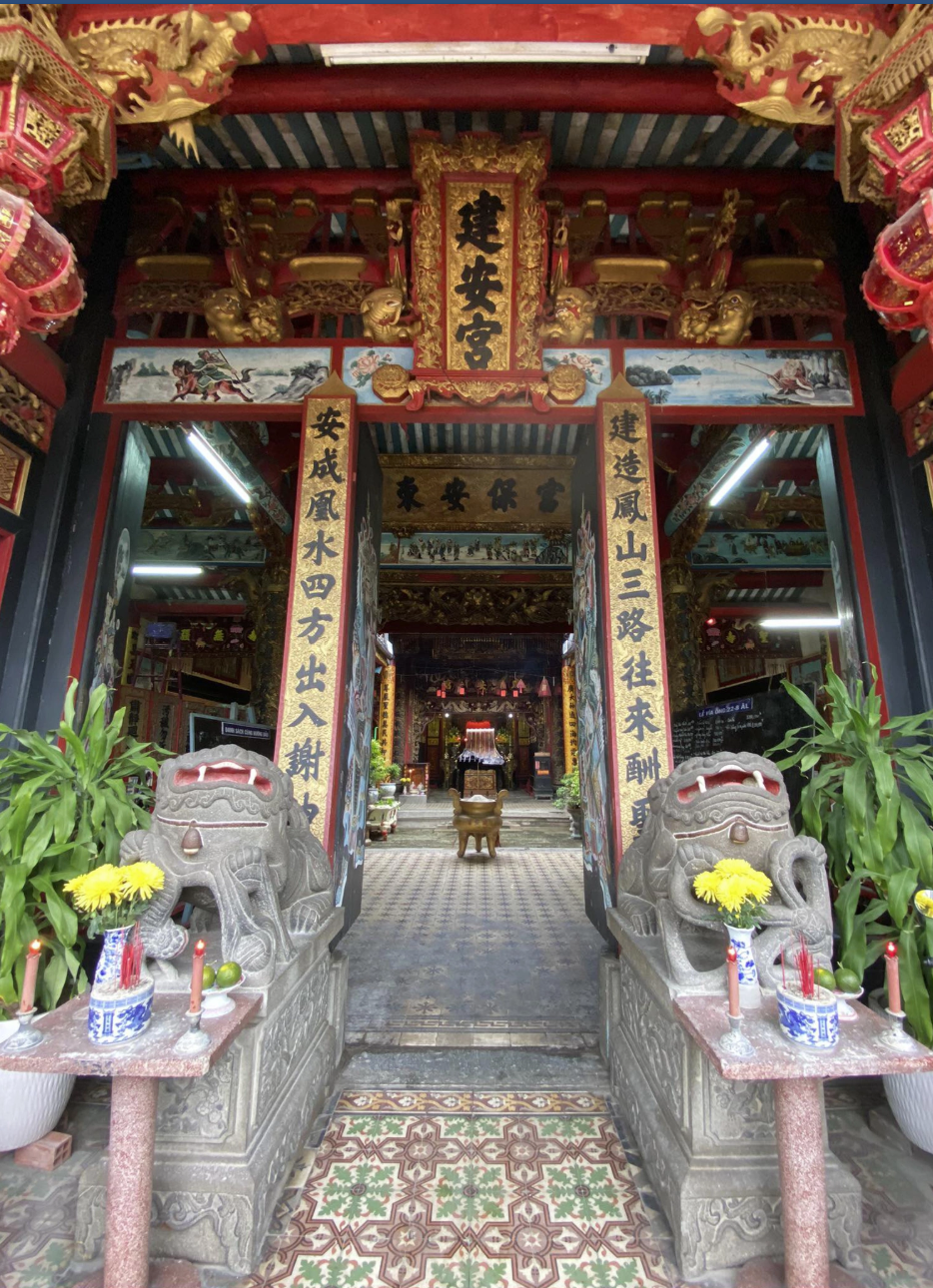 |
The facade of Kien An Cung Pagoda. Photo: Dong Phong
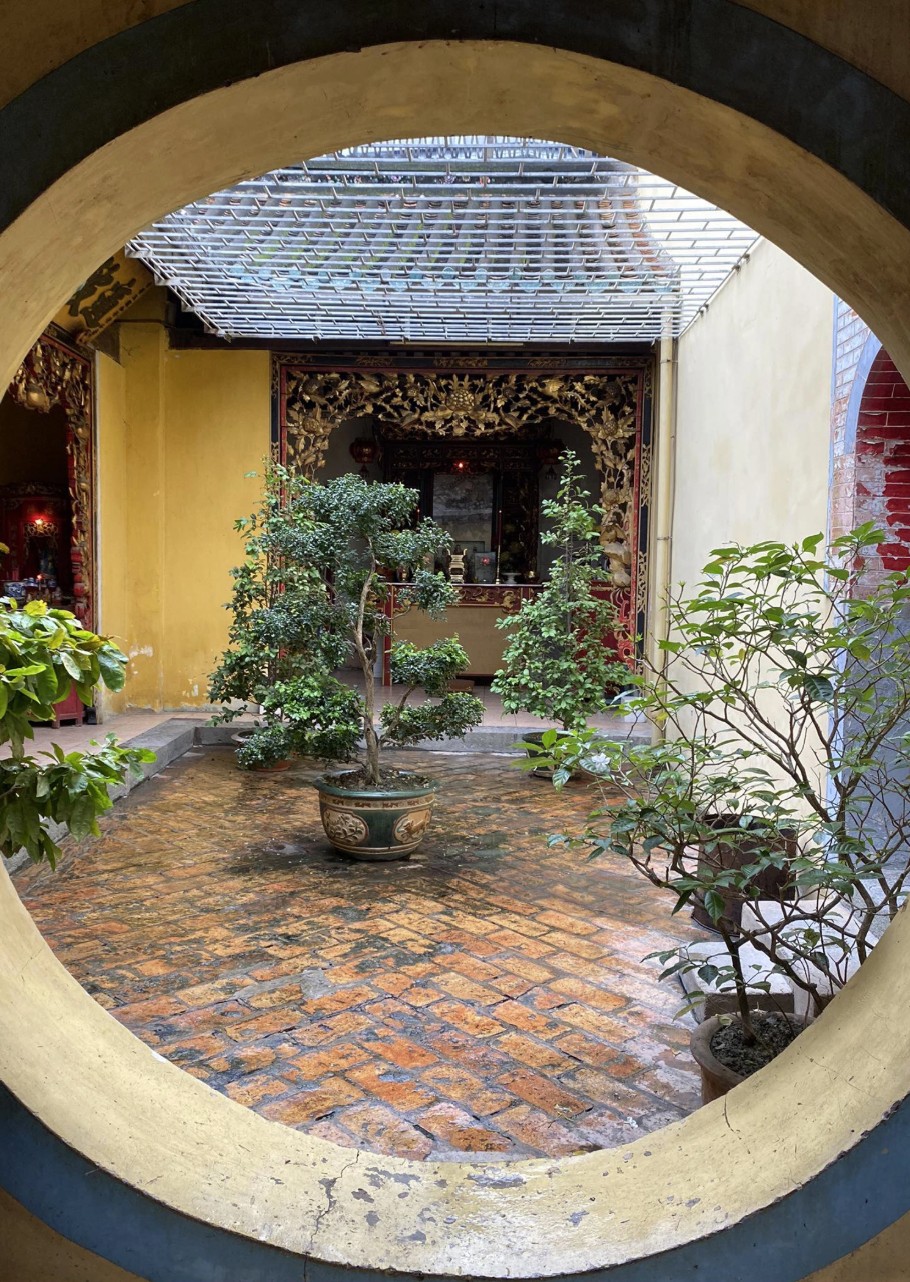 |
Decorative details within the pagoda. Photo: Dong Phong
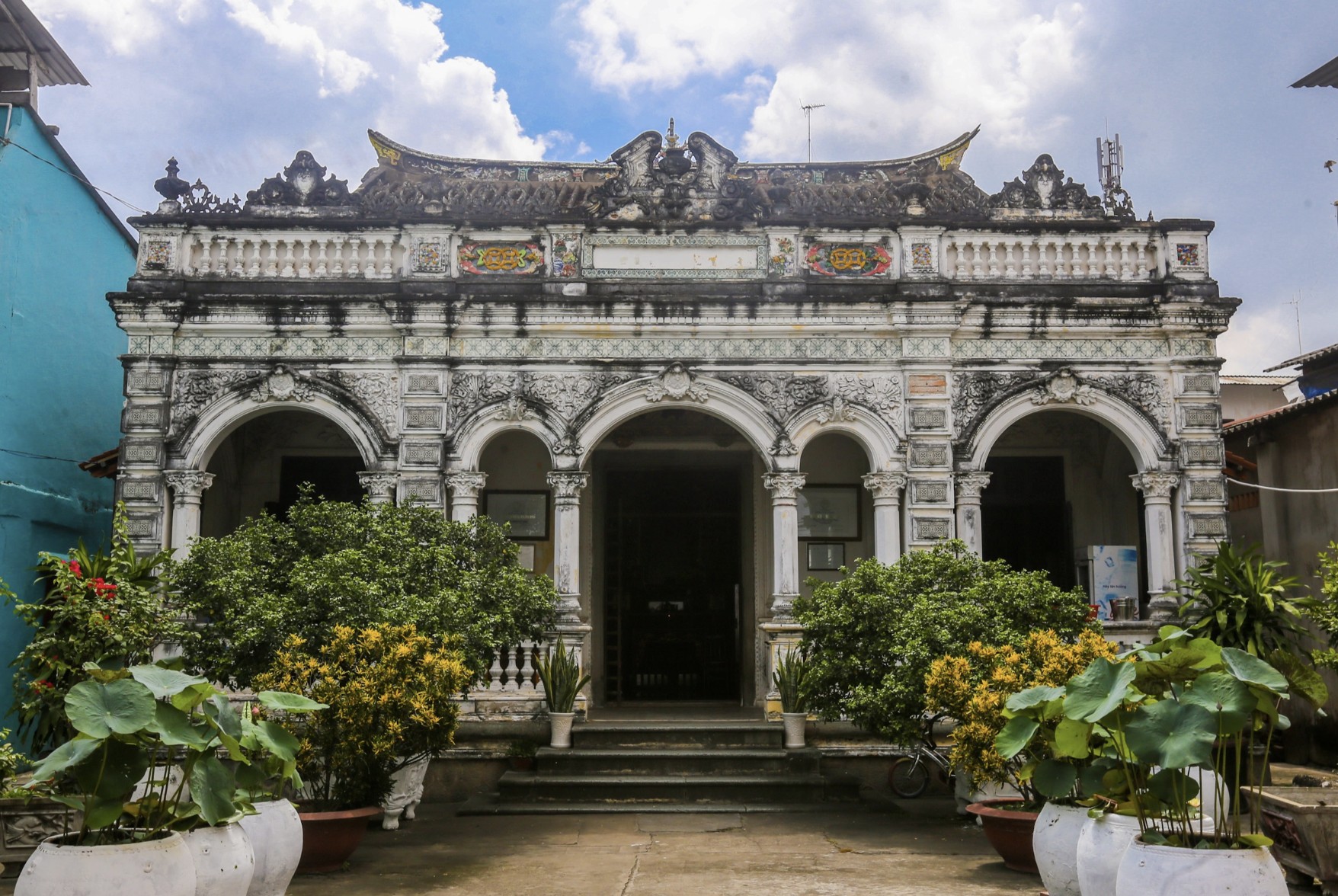 |
A walkway between the halls. Photo: Dong Phong
Ray Cu Ho, a provincial historical and cultural relic, is a resistance base covering over 4 hectares, located in Ward 2, former Sa Dec Town. It was established by the Sa Dec Town Committee during the years when President Ho Chi Minh called for national resistance.
At that time, the area had many farms and scattered houses, hence the name "farm hamlet." Within the hamlet was Ong Pagoda, considered a safe haven for Vietnamese troops arriving in Sa Dec. Local residents acted as messengers, relaying information to the revolutionary forces and safeguarding the base.
Throughout the resistance years, Ray Cu Ho served as a vital base, sheltering numerous Vietnamese troops and witnessing significant victories. It became a symbol of the bond between soldiers and civilians, and the people's affection for the revolution and President Ho Chi Minh.
Another popular attraction in Sa Dec is Huynh Thuy Le Ancient House. Built in 1895, this house has spanned three centuries, embodying the quintessential values of Southern Vietnamese ancient architecture, harmoniously blending Vietnamese, French, and Chinese styles.
The house is associated with the romantic story between Marguerite Duras, a French writer, and Huynh Thuy Le, a Vietnamese man of Chinese descent, in the late 1920s and early 1930s. Their love story was later depicted in the Goncourt Prize-winning novel "The Lover" (1984) and the subsequent film adaptation (1992).
Huynh Thuy Le Ancient House has become a tourist attraction, drawing many domestic and international visitors. From 2020 to the present, the house has welcomed nearly 77,000 visitors, almost 40% of whom are international tourists.
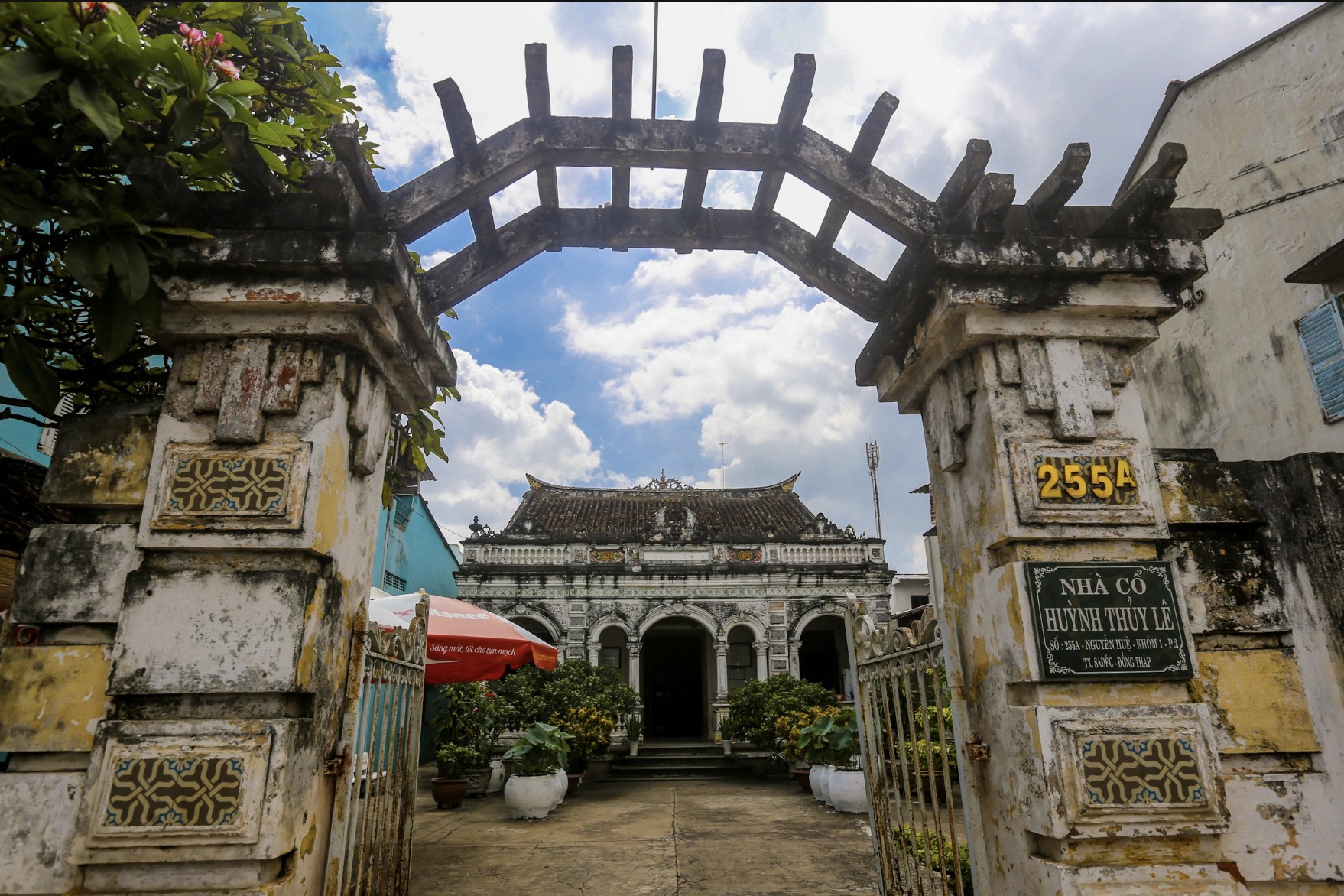 |
Huynh Thuy Le Ancient House. In addition to its architectural value, the house is famous for its connection to the love story of Huynh Thuy Le and Marguerite Duras, a French writer. Photo: Quynh Tran
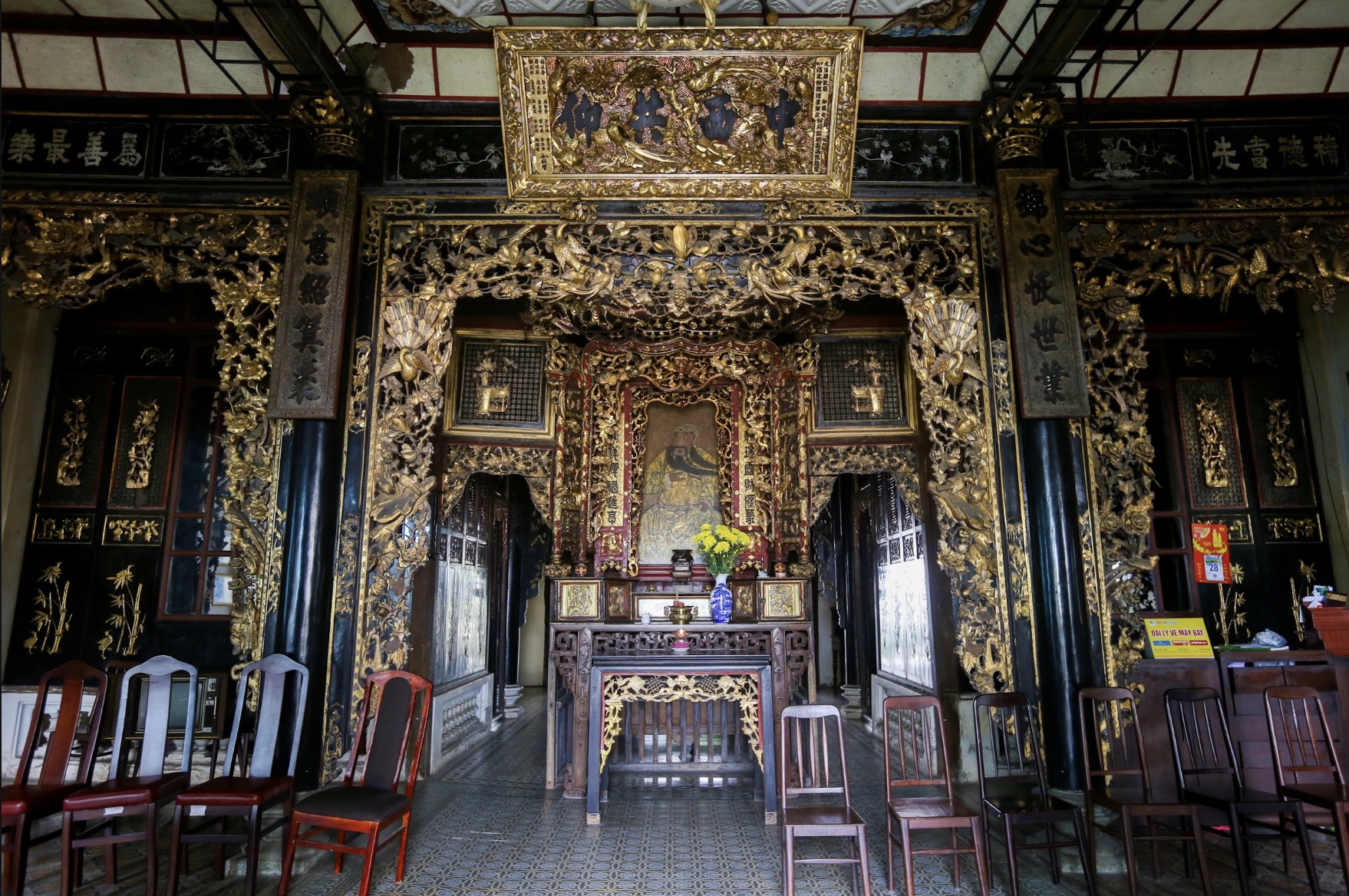 |
The entrance to Huynh Thuy Le Ancient House. Photo: Quynh Tran
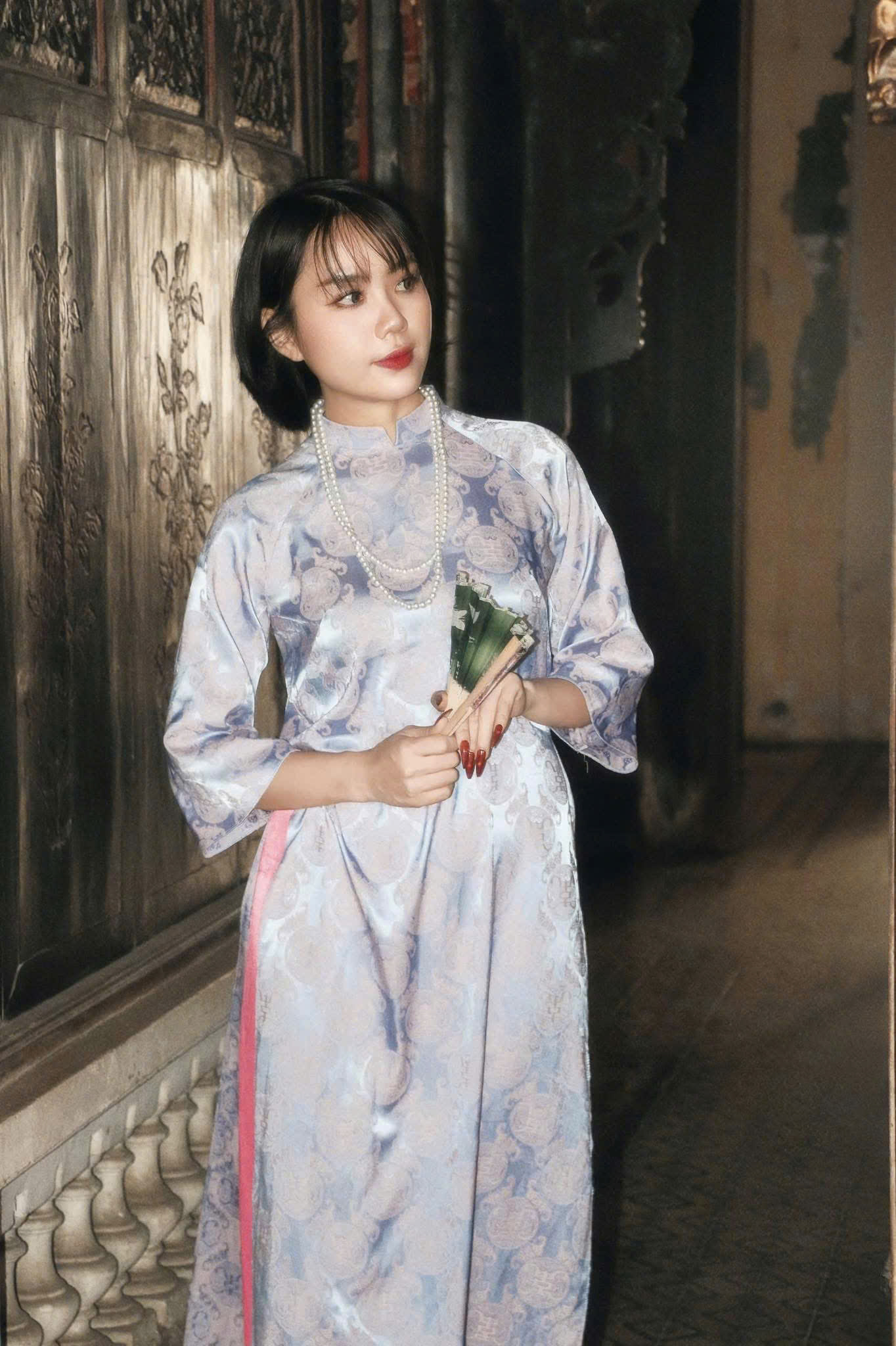 |
The three-room house features characteristic Southern architecture, with lacquered and gilded doors, columns, and altars, adorned with dragon and phoenix carvings. Photo: Quynh Tran
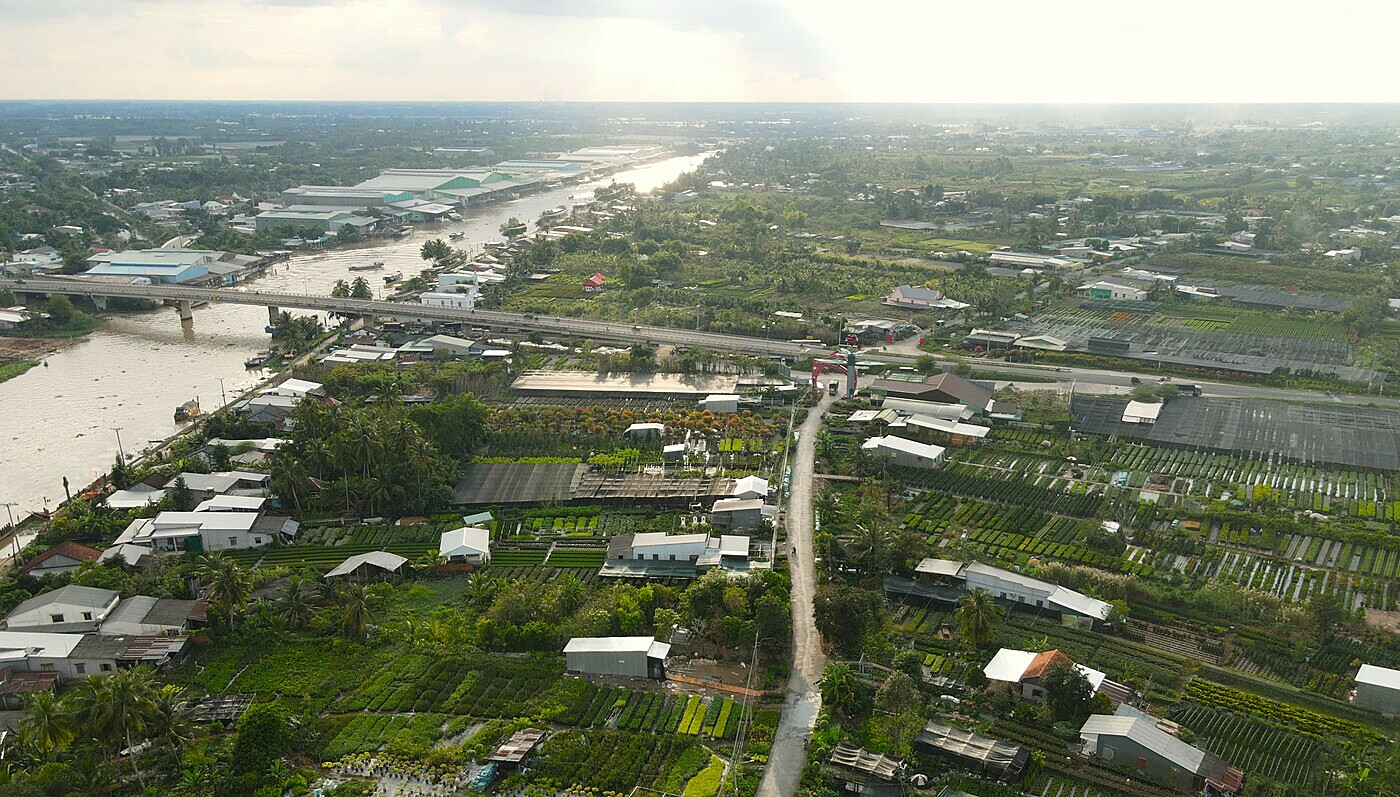 |
Tourists taking photos inside the ancient house. Photo: Tran Tran
Besides revolutionary relics and the century-old flower village, Sa Dec also has 62 religious establishments, including pagodas, temples, churches, and Caodai Holy Sees. There are also over 25 houses with ancient architectural art along the Sa Dec River and 12 historical sites.
According to historical records, Sa Dec was once a commercial center for trade between Southern Vietnam and neighboring regions. Throughout various periods, from the Nguyen Dynasty and French colonial rule to the post-liberation era, diverse religious communities flourished here, contributing to the formation of numerous religious structures. Almost every street in this flower city boasts several pagodas and architectural works, leaving visitors surprised and delighted.
Recognizing this significant potential, the political report of the first Sa Dec Ward Party Congress for the 2025-2030 term identified tourism development linked to promoting the historical and cultural values of relics, ancient houses, and religious buildings as one of three strategic breakthroughs to boost local socio-economic development.
Nguyen Phuoc Thien, Secretary of the Sa Dec Ward Party Committee, stated: "Sa Dec possesses valuable local resources, particularly historical and cultural relics and ancient architectural works, which have untapped potential. These sites are attracting a new wave of tourists, including many international visitors."
The Sa Dec Ward Party Committee announced plans to develop and effectively implement a project to preserve and promote the values of historical and cultural relics and ancient architectural works. These efforts aim to safeguard the precious values of these sites as an integral part of the history and development of Sa Dec's people and land.
The project will create more meaningful tourism products with tangible and intangible historical value, contributing to the local socio-economic growth.
Ngoc Tai










